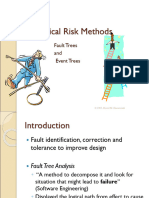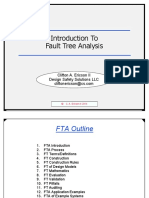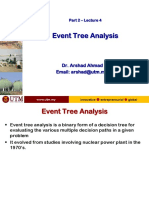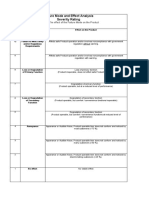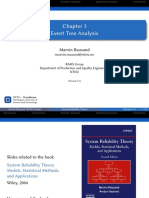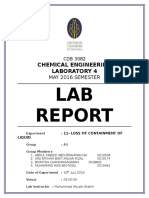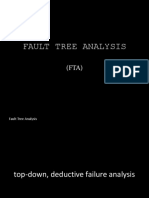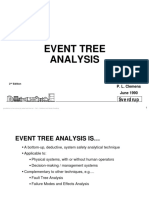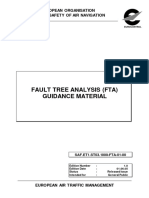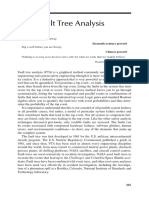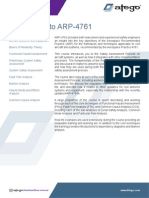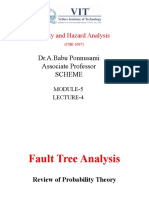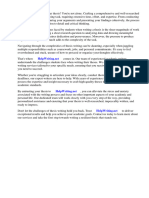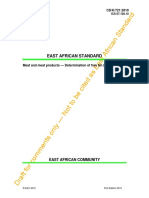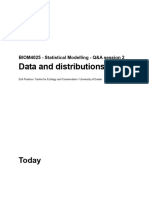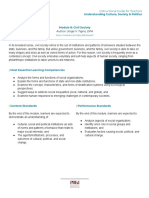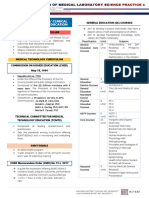0% found this document useful (0 votes)
160 views24 pagesFault Tree Analysis
Event tree analysis (ETA) and fault tree analysis (FTA) are methods used in quantitative and qualitative risk analysis to develop logical trees. A fault tree uses deductive logic to identify the sequence of component failures that could lead to a defined system failure or top event. It provides a visual representation of the relationships between failures and their causes. A fault tree analysis begins by defining an undesired event and tracing it back through successive causes until basic causes are identified. An event tree uses inductive logic to analyze how initial events propagate forward to end states.
Uploaded by
KAUSTAV ROYCopyright
© © All Rights Reserved
We take content rights seriously. If you suspect this is your content, claim it here.
Available Formats
Download as PDF, TXT or read online on Scribd
0% found this document useful (0 votes)
160 views24 pagesFault Tree Analysis
Event tree analysis (ETA) and fault tree analysis (FTA) are methods used in quantitative and qualitative risk analysis to develop logical trees. A fault tree uses deductive logic to identify the sequence of component failures that could lead to a defined system failure or top event. It provides a visual representation of the relationships between failures and their causes. A fault tree analysis begins by defining an undesired event and tracing it back through successive causes until basic causes are identified. An event tree uses inductive logic to analyze how initial events propagate forward to end states.
Uploaded by
KAUSTAV ROYCopyright
© © All Rights Reserved
We take content rights seriously. If you suspect this is your content, claim it here.
Available Formats
Download as PDF, TXT or read online on Scribd
/ 24
